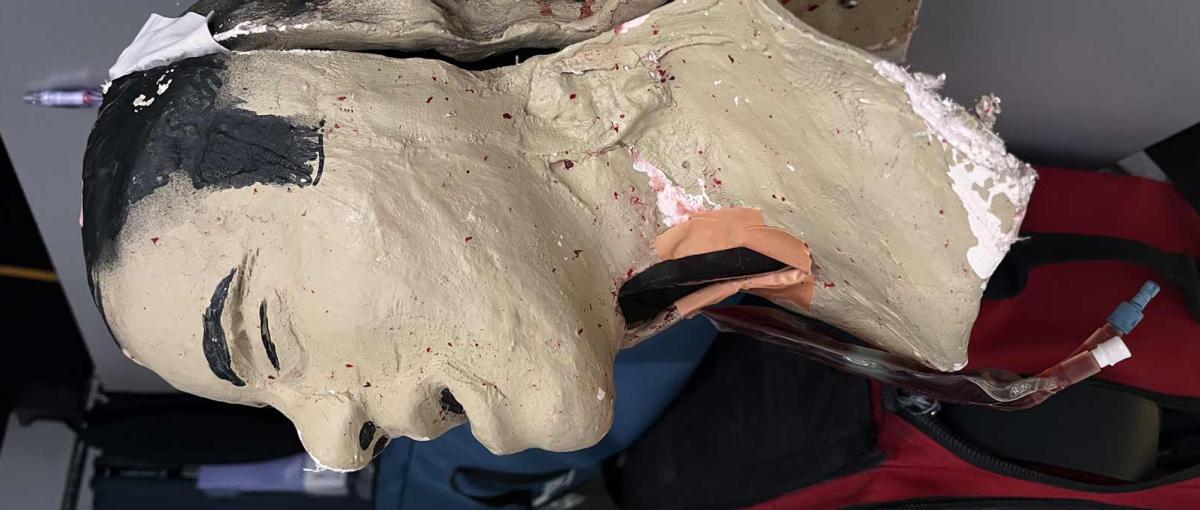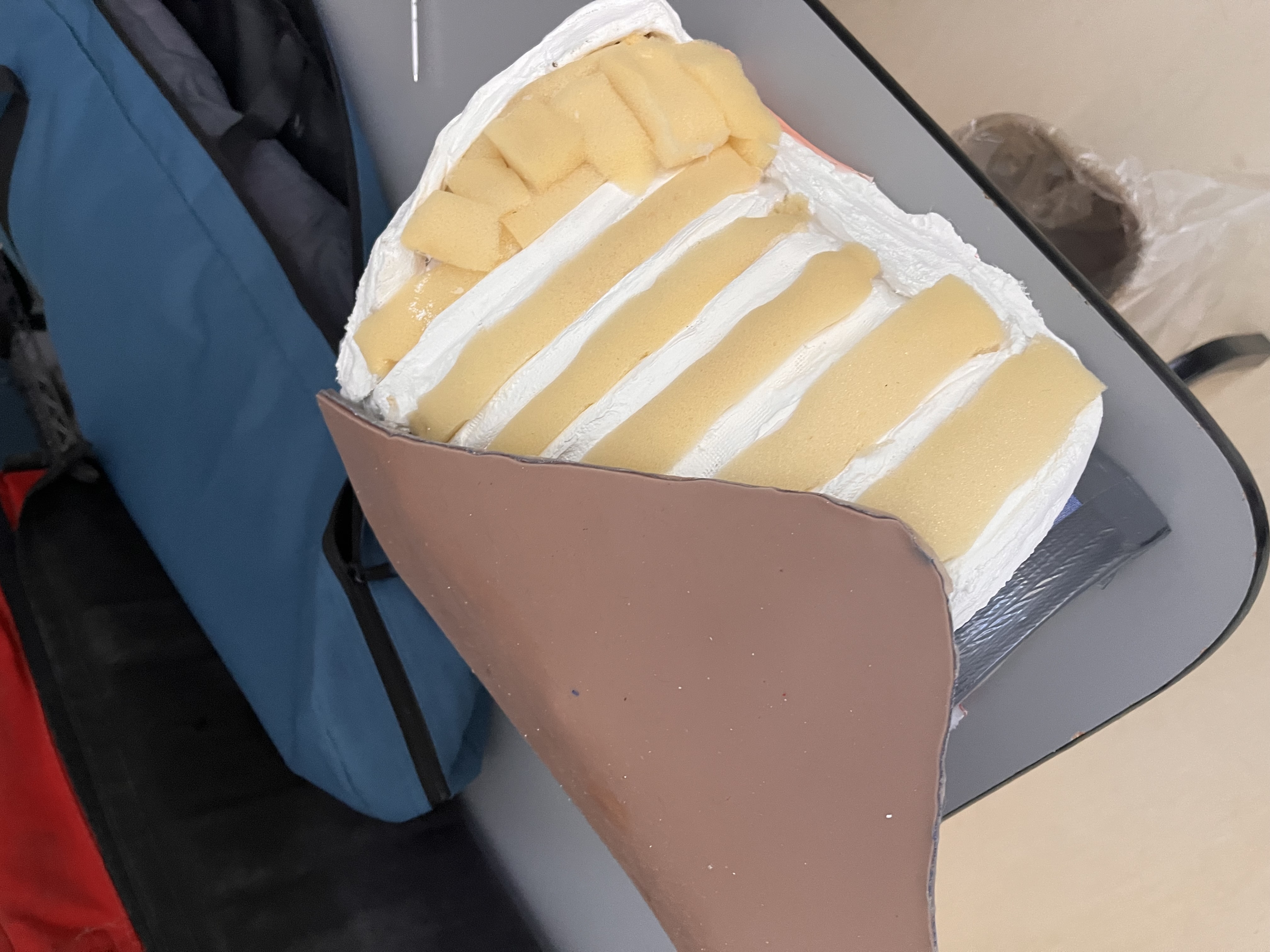Paramedic’s ingenuity boosts trauma response training at Banff Mineral Springs Hospital

March 6, 2025
By Katrina Lingrell, senior advisor, digital communications
Based out of Banff Mineral Springs Hospital, advanced care paramedic Kevin Palmer gets creative between calls to help hospital staff hone their trauma response skills in Canada’s busiest national park.
The 20-year emergency medical services (EMS) veteran crafts realistic models — like synthetic tissues, ribcages and airways — for staff to use during simulations. Taking on the role of a technician, Kevin repairs simulation equipment and uses his models to recreate high-risk medical emergencies.
“Mannequins are expensive, so as I’m repairing equipment, I think about how I can modify it. How can I enhance the training with what I have?” Kevin says. “It’s an opportunity to recreate situations like catastrophic facial injuries that prevent oxygenation or ventilation, which are high acuity but low occurrence, so staff can get a feel for the techniques they would use.”
Many of these life-saving techniques are invasive and difficult to replicate on expensive training mannequins without damaging the equipment. But Kevin’s innovative models — from pork ribs that simulate an injured chest to broken “limbs” made of casting materials — help healthcare workers develop the muscle memory they need to perform these procedures in real settings.

A ribcage built with a second skin allows healthcare staff to practice inserting chest tubes.
“Kevin builds things that people can use to get their hands dirty,” says Leslee Bossert, a clinical nurse educator who co-ordinates clinical training across Banff Mineral Springs Hospital. “He’s good at it, he’s passionate about it, and he cares about the community.
“Right now, he’s building a ribcage with a second skin and other layers so people can cut it open and put in chest tubes. You can’t do that with a $30K model.”
Multidisciplinary simulations are deeply ingrained in the hospital’s culture, Leslee says. With a dedicated simulation lab, the facility runs between 50 and 70 simulations each year, often including EMS, fire rescue, Parks Canada, ski patrol and other community partners. These exercises prepare teams to respond to the complex conditions that can occur in Banff, where more than four million people visit annually.
“You’ll save someone’s life if you know what to do, but you might only see it once in your career,” says Leslee. “Having practice to do these things in a safe environment helps you make good clinical decisions and smart choices when you see the real thing.”
Leslee says the models Kevin builds, which are more realistic than traditional simulation equipment, ensure staff get the most out of the exercises.
“I’ve used expired saline bags filled with ballistic jelly to simulate what it would feel like to cut through layers of muscle, for example,” Kevin says. “We’ve used this to practice making an emergency breathing hole in someone's throat, and the bags can be reused and put back in a mannequin.”
Models like this one, combined with the hospital’s learning culture, ensure Banff hospital teams and first responders are ready for a range of medical scenarios where every second counts.
“There is tremendous staff buy-in,” Leslee says. “People want to be experts in their fields, which speaks to the quality of care they provide.”